Medical expert of the article
New publications
Preparations
Ointments for scars
Last reviewed: 03.07.2025

All iLive content is medically reviewed or fact checked to ensure as much factual accuracy as possible.
We have strict sourcing guidelines and only link to reputable media sites, academic research institutions and, whenever possible, medically peer reviewed studies. Note that the numbers in parentheses ([1], [2], etc.) are clickable links to these studies.
If you feel that any of our content is inaccurate, out-of-date, or otherwise questionable, please select it and press Ctrl + Enter.
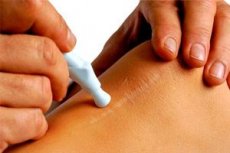
To reduce the defect that appears on the skin after healing of its damage (postoperative suture, cut wound, burn, etc.), an ointment is used for scars - dense connective tissue that replaces the normal epidermis and differs from it in its structure. The fibrillar protein collagen, consisting of glycoprotein fibers, predominates in the scar tissue.
In addition, fibrous scar tissue can grow, forming so-called keloids. In such cases, a properly selected ointment for keloid scars can help.
Release form
Let us list some names of ointments for scars that have shown a therapeutic effect and can be used in clinical practice.
Thus, in order to prevent the growth of scar tissue, corticosteroid drugs are prescribed, such as 1% Hydrocortisone ointment (other trade names - Laticort, Acortin). The use of Sinaflan ointment for keloid scars (Sinaflan or Flucinar) is widely practiced.
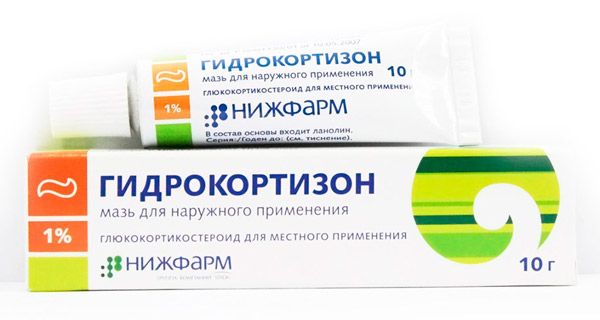
Sodium heparin belongs to the anticoagulant group of drugs, and Heparin ointment, promoting the resorption of blood clots, is used in the complex treatment of varicose veins and superficial thrombophlebitis of the veins of the lower extremities, for the resorption of hematomas of various localizations, the removal of soft tissue edema, and also as an ointment for keloid scars.
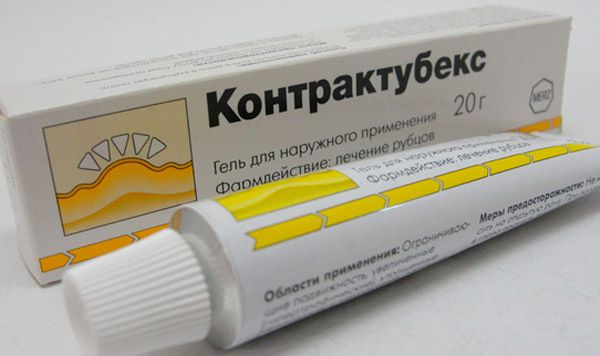
Sodium heparin is a part of the gel Contractubex and the ointment for old scars Kelofibrase (Dermofibrase).

To soften and reduce the severity of scars, use the silicone ointment (gel) Dermatix (Zeraderm Ultra). This product is used as a fairly effective ointment for the absorption of scars on the face. Scar marks from acne on the face can be reduced with the gel-based ointment Mederma.
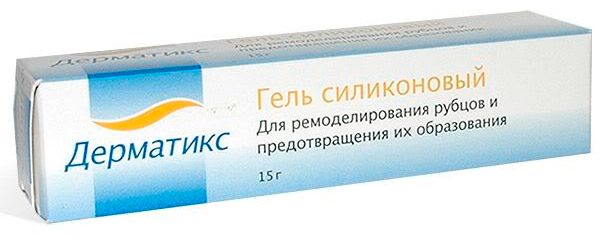
Topical retinoic acid preparations are used to treat severe acne, and retinoic acid ointment for scars can also help prevent acne scars from forming.
In the process of healing many injuries, an effective ointment for scars Madecassol can be used - with an extract of the medicinal plant Centella asiatica. This remedy has proven itself well as an ointment for atrophic scars (i.e. slightly deepened), which appear after the healing of the skin due to a violation of the synchronous formation of granulation tissue in the wound and its epithelialization. Very often, scars of this type are formed after acne.
Ichthyol ointment for scars is rarely used today, as there are newer and more effective remedies, especially since this ointment was used and continues to be used as an antiseptic to stop suppurative inflammation of the skin.

Methyluracil ointment is used exclusively to accelerate the reparative regeneration of damage, including wounds, burns and trophic ulcers, for eczema and dermatitis.
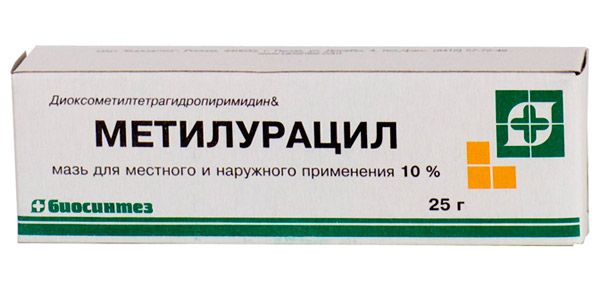
Zinc ointment will not help with scars: it is an antiseptic that dries out wet (non-purulent) skin inflammations in dermatitis or diaper rash well. Although, if you smear zinc ointment on a pimple that has just appeared, you can get rid of it without a trace. But Clearvin is not a medicine, it is a cosmetic cream based on Ayurvedic herbs and beeswax, recommended for the care of problem skin.
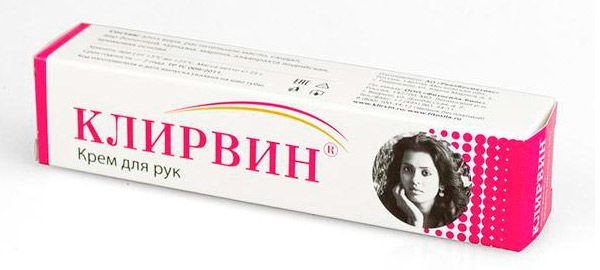
Today, Heparin and Hydrocortisone ointments, as well as the drug Sinaflan, are the cheapest ointments for scars.
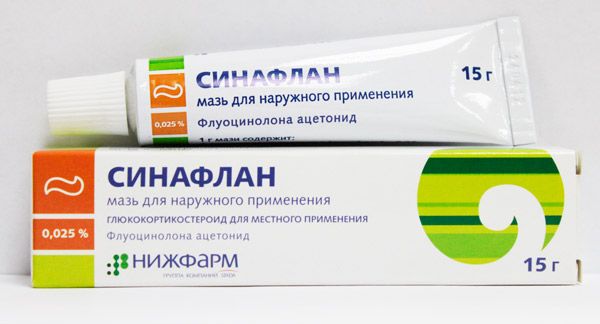
Although scar tissue formation is a physiologically conditioned component of the healing process, a popular folk remedy – ointment made from yolks for burn scars – supposedly helps burns heal without scarring. This remedy is prepared by evaporating several hard-boiled egg yolks ground into a homogeneous mass in a dry frying pan.
Pharmacodynamics
In the healing site of damaged skin there are many actively multiplying poorly differentiated fibroblasts, which intensively produce protein components of connective tissue (collagen and elastin) and glycosaminoglycans of the intercellular matrix (hyaluronic and glucuronic acids, dermatan sulfates, etc.).
The effect that Heparin ointment has on this process is due to the ability of negatively charged sodium heparin molecules to bind positively charged molecules of the intercellular fluid. In addition, heparin is a glycosaminoglycan and helps to regulate metabolism in the intercellular substance of the skin, containing fibrils of connective tissue (from which the scar is formed).
Topical glucocorticosteroids - Hydrocortisone ointment and Sinaflan ointment (Flucinar) - in addition to reducing the synthesis of inflammatory mediators and blocking mast cells, inactivate fibroblasts, reducing the production of fibrous protein of scar tissue - collagen. Thus, the use of Sinaflan ointment for keloid scars is fully justified.
Dermatix silicone ointment (Zeraderm Ultra) works differently: the polysiloxane (oxygen-containing silicone) and silicon dioxide included in its composition, when applied to the skin, form a thin protective layer that retains moisture and helps soften scar tissue.
Mederma facial scar resorption ointment consists of cepalin, an onion extract (whose flavonoids inhibit fibroblast proliferation), and allantoin, a product of uric acid oxidation that helps retain moisture in the skin matrix and promotes the ordering of collagen fibrils in scar tissue.
The active ingredient of Madecassol ointment is an extract of the medicinal plant Centella or Asian peltate, which contains triterpene saponins with surface and hemolytic activity. Asiatic acid plays a special role, under the influence of which skin damage heals faster, and fibroblasts divide more slowly, producing less dense collagen. Due to these processes, coarse scar tissue does not form on the surface of the wound.
Retinoic ointment for scars or Isotrexin contains a derivative of retinoic acid isotretinoin. It has been noted to have an inhibitory effect on the formation of the main collagen-producing cells of the skin fibroblasts with a simultaneous positive effect on epithelialization in the upper layers of damaged skin. And this happens due to the participation of retinoic acid in the process of differentiation of young fibroblasts into collagenoblasts, myofibroblasts and fibroclasts, and the latter act as phagocytes, destroying excess collagen. Therefore, topical agents with retinoic acid are used both for injection into scar tissue and as an ointment for keloid scars. See also - Treatment of keloid scars.
Improves the trophism and water balance of skin cells and the intercellular matrix of the ointment for old scars Kelofibrase based on urea and heparin.
Dosing and administration
Any ointment for scars is applied to its surface in a very thin layer: Heparin and Hydrocortisone ointments, Dermatix and Retinoic ointment for scars - twice a day;
The use of Sinaflan ointment for colloidal scars is allowed three times within 24 hours (lightly rubbing into the scar tissue); Sinflan cannot be applied to the skin of the face!
Mederma facial scar resorption ointment can be applied up to four times a day (duration of use ranges from two to six months).
According to the official instructions, Kelofibrase is recommended to be used two to three times a day, followed by light massage of the treated area. The course of treatment can last up to six months.
Use scar ointments during pregnancy
There is no information in the instructions regarding the use of Dermatix, Mederma, and Kelofibrase scar ointments during pregnancy.
Pregnant women are prohibited from using retinoic ointment.
Heparin ointment is allowed for use by pregnant women only if it is prescribed by a doctor, after having previously tested the patient’s blood for platelet levels.
Glucocorticosteroid drugs – Hydrocortisone ointment, Sinaflan (Flucinar), etc. – are prescribed during pregnancy in exceptional cases, as they can lead to serious disruptions in the adrenal glands of the unborn child.
Contraindications
Contraindications to the use of the above mentioned agents include:
- Heparin ointment – damage to the integrity of the skin and poor blood clotting;
- Hydrocortisone ointment and Sinaflan - purulent inflammation of the skin and ulcers, fungal diseases, tuberculosis of the skin;
- Dermatix – skin infections and damage;
- Mederma, Kelofibrase - hypersensitivity to drugs;
- It is better not to use retinoic ointment in case of kidney and/or liver failure, pancreatic diseases and serious heart problems.
Side effects scar ointments
Heparin ointment: skin hyperemia, urticaria, itching;
Hydrocortisone ointment and Sinaflan: dry skin, burning, itching, acne, stretch marks, skin discoloration, appearance of spider veins;
Dermatix: hyperemia of the skin after applying the ointment;
Mederma and Kelofibrase: redness and burning of the skin;
Retinoic ointment: redness, increased dryness and flaking of the skin.
Interactions with other drugs
Scar ointments Dermatix, Mederma, Kelofibrase, Hydrocortisone ointment and Sinaflan should not be used simultaneously with any other external agents.
In addition, Heparin ointment is incompatible with NSAIDs, tetracycline and antihistamines, and Retinoic ointment is incompatible with tetracycline and corticosteroids.
Storage conditions
Retinoic ointment for scars should be stored at a temperature of +5-10°C; Heparin ointment – at +12-15°C; Hydrocortisone ointment, Sinaflan, Dermatix, Mederma, Kelofibrase – up to +25°C.
 [ 25 ]
[ 25 ]
Shelf life
Shelf life: Dermatix – 5 years, Heparin ointment – 3 years, Hydrocortisone ointment, Sinaflan, Retinoic ointment, Mederma, Kelofibrase – 2 years.
 [ 26 ]
[ 26 ]
Attention!
To simplify the perception of information, this instruction for use of the drug "Ointments for scars" translated and presented in a special form on the basis of the official instructions for medical use of the drug. Before use read the annotation that came directly to medicines.
Description provided for informational purposes and is not a guide to self-healing. The need for this drug, the purpose of the treatment regimen, methods and dose of the drug is determined solely by the attending physician. Self-medication is dangerous for your health.

